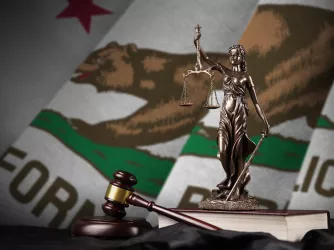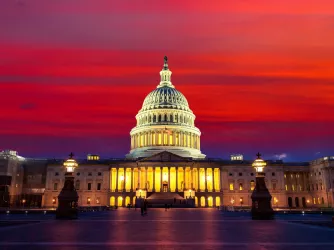Table of Contents
'Harvard Law Review' Gets Lazy: Prestigious Journal Publishes Article Ignoring Case Law, Defending Speech Codes
In its April issue, a case comment in the Harvard Law Review (HLR) analyzes one of FIRE's favorite legal victories, DeJohn v. Temple University, 537 F.3d 301 (3d Cir. 2008). As Torch readers will remember, in DeJohn, the United States Court of Appeals for the Third Circuit struck down Temple University's broad sexual harassment policy on First Amendment grounds for proscribing a great deal of protected speech. Prior to the ruling, FIRE submitted an amicus brief to the Third Circuit urging it to reach precisely the result it did; and since the landmark victory, we've notified colleges across the country that yet another speech code has fallen in court. And we're not the only ones who think DeJohn was a big deal: Just last month, a federal district court judge in California enjoined the Los Angeles Community College District from enforcing its overbroad sexual harassment policy, relying in large part on the Third Circuit's ruling in DeJohn.
However, to FIRE's surprise and deep disappointment, the HLR comment thinks DeJohn was decided incorrectly. In fact, the comment takes the shocking position that speech codes on campus are constitutional. Even more surprising than the conclusion, though, is the shoddy analysis supporting it. For one of the nation's premier legal journals—indeed, four current Supreme Court justices are HLR alums, and the President of the United States is another—HLR sure mailed this one in. (For the record, publishing student scholarship anonymously is HLR policy. As the student-edited journal explains, "this policy reflects the fact that many members of the Review, besides the author, make a contribution to each published piece.")
Where to start?
Perhaps most unforgivably, the HLR analysis reveals both the author and the comment's editors to be completely unaware of the larger legal landscape concerning campus speech codes. Amazingly, the analysis does not acknowledge that any case law on speech codes exists, let alone the fact that prior to DeJohn, eight different federal courts struck down speech codes as unconstitutional. Indeed, seven of those eight cases involved a "harassment policy" similar to the one at issue in DeJohn, and the eighth case struck down a civility policy and limited a harassment policy that was—unlike the policy in DeJohn—already narrow in its scope, narrowing it further to proscribe only true harassment.
Here are the citations for cases the comment's author and editors missed: Dambrot v. Central Michigan University, 55 F.3d 1177 (6th Cir. 1995) (declaring university discriminatory harassment policy facially unconstitutional); College Republicans at San Francisco State University v. Reed, 523 F. Supp. 2d 1005 (N.D. Cal. 2007) (enjoining enforcement of university civility policy); Roberts v. Haragan, 346 F. Supp. 2d 853 (N.D. Tex. 2004) (finding university sexual harassment policy unconstitutionally overbroad); Bair v. Shippensburg University, 280 F. Supp. 2d 357 (M.D. Pa. 2003) (enjoining enforcement of university harassment policy due to overbreadth); Booher v. Board of Regents, 1998 U.S. Dist. LEXIS 11404 (E.D. Ky. Jul. 21, 1998) (finding university sexual harassment policy void for vagueness and overbreadth); The UWM Post, Inc. v. Board of Regents of the University of Wisconsin System, 774 F. Supp. 1163 (E.D. Wis. 1991) (declaring university racial and discriminatory harassment policy facially unconstitutional); Doe v. University of Michigan, 721 F. Supp. 852 (E.D. Mich. 1989) (enjoining enforcement of university discriminatory harassment policy due to unconstitutionality).
This avalanche of case law makes clear that labeling a policy that broadly proscribes offensive speech a "harassment policy" does not magically render it constitutional. Colleges that accept federal funding must ban true harassment under Title IX, but "harassment policies" at a majority of universities proscribe a great deal of speech that does not qualify as true harassment. As the Supreme Court has made clear, true harassment in the educational context is conduct "so severe, pervasive, and objectively offensive that it effectively bars the victim's access to an educational opportunity or benefit." Davis v. Monroe County Board of Education, 526 U.S. 629, 652 (1999). Thus, despite being labeled as "harassment policies," restrictions that go further than the exacting legal standard for true harassment are more accurately described as speech codes. Had the author been aware of the unambiguous case law on this point, perhaps he or she might have tried a bit harder to defend their conclusion.
The policy at issue in DeJohn was similar to many other overbroad harassment policies. It proscribed, among other things, "expressive conduct" of a "sexual or gender-motivated nature" which "has the purpose or effect of ... unreasonably interfering with an individual's work, educational performance, or status" or "creating an intimidating, hostile or offensive environment." DeJohn at 34. So, to be clear, Temple proscribed gender-motivated speech that created, or was merely intended to create, an "offensive environment." That is simply not the type of speech that can be proscribed under the First Amendment, and Temple's labeling it "harassment" does not make it true harassment any more than labeling such speech a "threat" or "obscenity" would make it a threat or obscenity. Colleges can proscribe threats, harassment, and obscenity, but those are legal terms with specific, narrow meanings. Colleges cannot slap those words on broad policies that proscribe "offensive" speech and suddenly be in compliance with the requirements of the First Amendment. Unfortunately for its readers—and its reputation—HLR ignores the jurisprudence explaining that altogether.
In its opinion, the Third Circuit started its analysis by carefully noting that college is a significantly different institution than grade school. The vast majority of college students are adults who have full constitutional rights, and the leeway given to grade schools to regulate student conduct by virtue of children's youth does not extend to college, which the Supreme Court has long recognized as the ultimate marketplace of ideas. DeJohn at 28. As a result, the Third Circuit reasoned, Temple had to provide its students with at least as much freedom as grade school students. Id. at 35. The court then found that Temple's policy did not even meet that low standard.
The HLR comment responded to this analysis by claiming that the Supreme Court case that set out the standard for freedom of expression for grade school students—Tinker v. Des Moines, 393 U.S. 503 (1969)—"was quite different" from DeJohn. According to the comment, "Tinker dealt with a distinct set of circumstances: an as applied-challenge, expressly political speech, viewpoint discrimination and a national backdrop of student protests." 122 Harv. L. Rev. 1771, Recent Cases, at 1775 (2009). Why these particular circumstances—including the especially irrelevant fact that the speech in Tinker occurred against "a national backdrop of student protests"—would limit the standard set out in Tinker to those particular facts, the HLR comment lazily does not bother to explain. Certainly, the Tinker Court could have limited its analysis to those factors—saying, for example, only that public schools could not ban political speech. But it didn't. That the Court chose instead to establish a broader standard for protecting student expression—which stated that schools could not ban speech unless it materially disrupted the school or interfered with the rights of others—when it easily could have offered a more limited holding, speaks to the Court's intention not to limit its holding to a narrow set of certain circumstances. The HLR comment's claim otherwise makes no sense and has no backing in the law. Again, this is lazy scholarship.
Stumbling onwards, the HLR comment next argues that the Supreme Court had, in any case, "clarified" that Tinker's standard was limited by later Court cases, which held that grade schools could exercise greater regulation over school-sponsored and pro-drug speech. Id. at 1775-1776. The problem with this argument is that the later cases neither overruled Tinker, nor extended it to college campuses. Tinker remains the main, and most protective, standard for grade school speech, and the Third Circuit was only using it as a minimum bar that Temple, as a public university with adult students, had to pass. If the HLR editor who authored the comment wants to argue that college students should have no more rights than grade school students, he or she should at least present arguments for that bizarre position rather than simply asserting that DeJohn should have given colleges the same ability to stifle speech as grade schools. As it stands, both the comment's author and reviewing editors manage the remarkable feat of being ignorant of the clear legal distinction between grade school students and college students, a distinction I explore at length in my article The Twenty-Sixth Amendment: Resolving the Federal Circuit Split Over College Students' First Amendment Rights, 14 Tex. J. on C.L. & C.R. 1 (Fall 2008). Truly, this embarrassing omission reveals the entire comment to be insufficiently researched to be of any import, but the comment doesn't stop there.
After critiquing DeJohn for failing to apply the lowest grade school bar to college campuses, the HLR comment moves on to argue that DeJohn also "would have found more useful guidance in the Supreme Court's sexual harassment jurisprudence." Id. at 1776. Indeed, FIRE often refers schools to the standard the Court laid out in Davis v. Monroe County Board of Education for peer-on-peer sexual harassment in the educational context, which states that harassing speech must, at a minimum, be "severe, pervasive and objectively offensive." Davis at 652.
But as it turns out, DeJohn did quote Davis in its rejection of Temple's policy, condemning the policy for lacking any requirement of severity, pervasiveness, or objective offensiveness, as Davis requires. DeJohn at 33. So what Supreme Court "sexual harassment jurisprudence" could the HLR comment think the Third Circuit would have found "more useful" than Davis? Without even acknowledging Davis—again, the Supreme Court sexual harassment case that actually established the binding legal standard for harassment in the educational setting—the comment claims that DeJohn should have applied the Court's workplace sexual harassment jurisprudence to a public university.
Azhar has written an entire paper on the dangers of applying workplace harassment standards to the educational setting and the clear statutory and jurisprudential reasons why doing so is incorrect. Azhar Majeed, The Misapplication of Peer Harassment Law on College and University Campuses and the Loss of Student Speech Rights, 35 J.C. & U.L. 385 (2009). However, it does not take a law degree to recognize the significant difference between students at college speaking in dorms, in college halls, on the public square, or in a classroom, and an employee speaking at work. Yet the HLR comment blithely dismisses this distinction in a footnote, stating that speech that would be harassing in the workplace "surely" would be "inconsistent with a school's basic educational mission" (internal quotes omitted). Recent Cases at 1777 n. 50. This pat assertion, combined with a failure to even mention Davis, is still more evidence of the intellectual laziness and sheer sloppiness underlying the piece's inattentive assertions.
In relying on workplace harassment law, the HLR comment continues on its road of insufficient argumentation, going so far as to misrepresent a case with selective quoting. The comment quotes the Court saying, "[W]hen the workplace is permeated with discriminatory intimidation, ridicule and insult ... Title VII is violated." Recent Cases at 1777. HLR fails to mention that it omitted the following caveat when it inserted the ellipsis: "that is ‘sufficiently severe or pervasive to alter the conditions of the victim's employment and create an abusive working environment.'" Harris v. Forklift Systems, 510 U.S. 17, 21 (1993). Of course, the lack of a severity or pervasiveness requirement is one of the main reasons DeJohn found Temple's policy constitutionally infirm—how convenient that the HLR allowed the omission of that caveat when quoting the Supreme Court's understanding of workplace harassment!
After misrepresenting workplace harassment law, the HLR comment next claims that workplace harassment law (as applied to universities, of course) is constitutional. Why? Because the Court has not addressed the constitutionality of workplace hostile environment harassment law as it applies to the workplace and it has stated in dicta that verbal conduct can amount to unprotected behavior. According to the comment, this "strongly suggests" the Court believes that hostile environment workplace harassment law is constitutional. Recent Cases at 1777. Needless to say, the Supreme Court not addressing the constitutionality of a policy does not amount to an endorsement, and saying that verbal conduct can amount to unprotected speech says nothing about the expression at issue in this, or any other, case. Such inferences require incredible leaps of logic. And remember that even if workplace hostile environment law were constitutional in the workplace, that certainly doesn't mean it is constitutional on a college campus. Besides, Temple's policy did not even meet the standard of workplace harassment. Again, the comment's argument is so thin as to suggest that staffers just mailed this one in before exams. At least, one hopes so; if this is what passes for substantive legal scholarship from one of the most prestigious journals in the country, then legal education is in a sorry state.
The comment's final, flailing attempt to justify upholding speech codes on campus is to argue that courts should "narrow" them "by a reasonable limiting construction." Recent Cases at 1779. Unsurprisingly, the piece does not address how that could have been done in Temple's case other than to suggest two minor limitations on the bloated policy. As even a brief perusal of FIRE's website reveals, even a "limiting construction" of a harassment policy as broad as Temple's would still silence a great deal of protected speech.
The striking lack of research and sound analysis in this piece reflects a lazy acceptance of speech codes disguised as harassment policies by the author and editors at the Harvard Law Review. It is sad that Harvard Law students' first instinct is to tie themselves up in illogical circles trying to defend college censorship of "offensive" speech. But perhaps this should come as no surprise. As FIRE's Co-founder and Chairman Harvey Silverglate has documented, Harvard Law School's own bloated sexual harassment policy arose from the ignoble circumstance of administrators, students, and faculty wanting to censor a student parody of radical feminist scholarship. The culture of Harvard Law School has apparently deteriorated to the point that its students are willing to publish deceptive apologetics for official censorship in their flagship journal.
UPDATE: This entry has been slightly revised to account for the Harvard Law Review's policy on student scholarship, which the Review publishes anonymously. Because student contributions like the "Recent Cases" comment at issue here are unsigned, our response originally attributed the views contained therein to the Harvard Law Review as an entity. We have modified our response to reflect the fact that the comment's analysis does not necessarily reflect the views of the Review per se. However, as the Review's policy states, student comments are published without attribution because "many members of the Review, besides the author, make a contribution to each published piece." As such, the Review bears significant institutional responsibility for this comment. We are disappointed that the Review's editors deemed this obviously flawed comment worthy of publication.
Recent Articles
FIRE’s award-winning Newsdesk covers the free speech news you need to stay informed.

One day after FIRE lawsuit, Congress passes changes to filming permits in national parks

VICTORY: FIRE lawsuit leads California to halt law penalizing reporters, advocates, and victims who discuss publicly known information about sealed arrest records

O holy fight: New Hampshire Satanic Temple statue threatened by more than vandals
